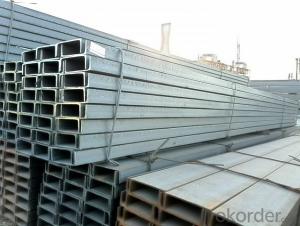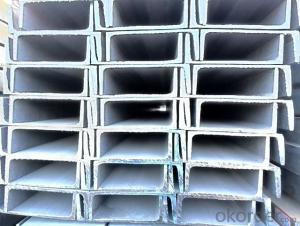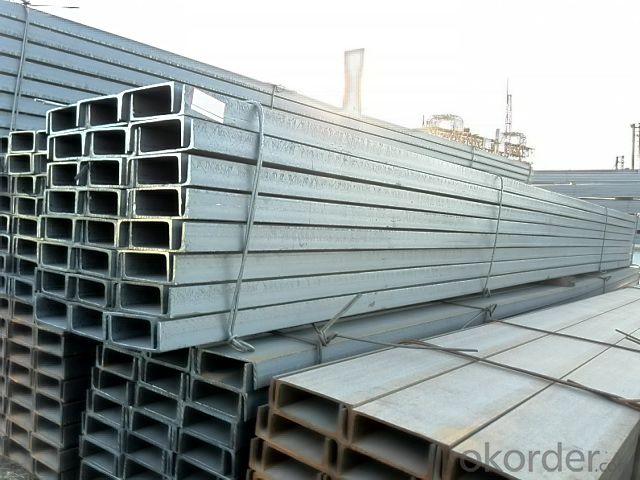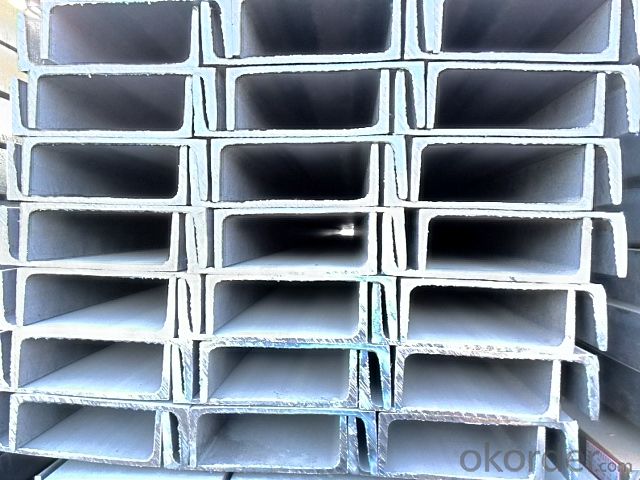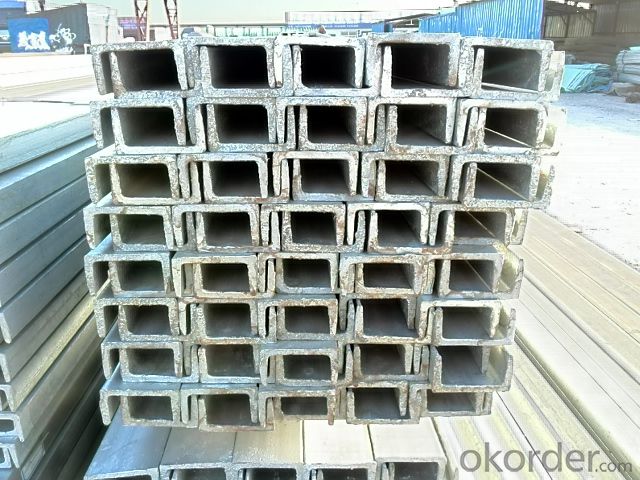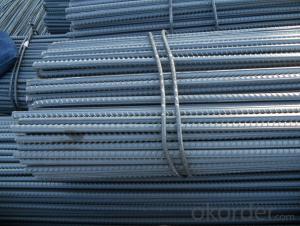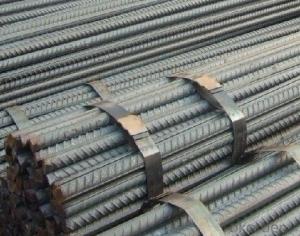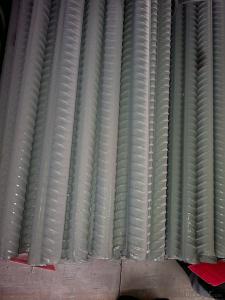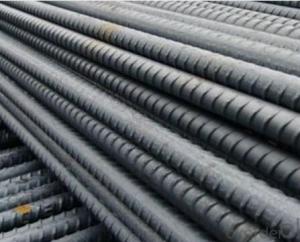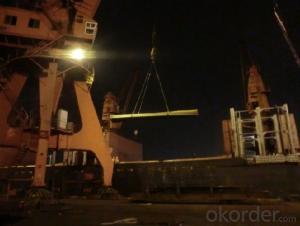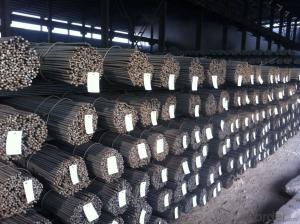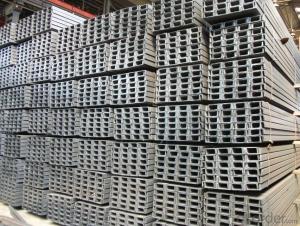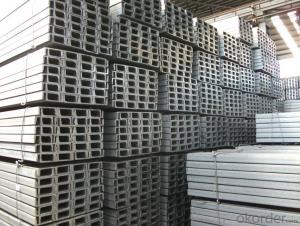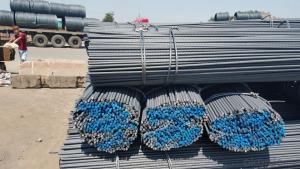U-channel Bars with High Quality and Good Price
- Loading Port:
- Tianjin
- Payment Terms:
- TT OR LC
- Min Order Qty:
- 25 m.t.
- Supply Capability:
- 10000 m.t./month
OKorder Service Pledge
OKorder Financial Service
You Might Also Like
Product Description:
| Minimum Order Quantity: | 25MT | Unit: | m.t. | Loading Port: | Xingang Port |
| Supply Ability: | 120000TON/Year | Payment Terms: | TT or LC |
Product Applications:
Hot Rolled U-channels are ideal for structural applications and are widely used in the construction of buildings and bridges, and the manufacturing, petrochemical, and transportation industries.
Product Advantages:
OKorder's Hot Rolled U-channels are durable, strong, and resist corrosion.
Main Product Features:
· Premium quality
· Prompt delivery & seaworthy packing (30 days after receiving deposit)
· Corrosion resistance
· Can be recycled and reused
· Mill test certification
· Professional Service
· Competitive pricing
Product Specifications:
Manufacture: Hot rolled
Grade: Q195 – 235
Certificates: ISO, SGS, BV, CIQ
Length: 6m – 12m, as per customer request
Packaging: Export packing, nude packing, bundled
1. We are definitely speciallizing in manufacturing and supplying channel steel as per japanese standard, which is characterised with high mechanical strength and competitive prices.
Original Place | Tangshan, China | Brand Name | UINDA |
Standard | JIS G3192 : 1990 | ||
Material Grade | SS490 | ||
Sizes | 50mm to 200mm | ||
Sales Volume/Year | 3000MT | ||
Destination Area | Middle East, Africa, Southeast Asia | ||
2. The sections in details are as followings in the table-1
JIS U CHANNEL | Standard | Sectional | Dimension |
| Mass: |
| (mm) | (mm) | (mm) | (mm) |
|
50x25 | 50 | 25 | 3.0 | 6.00 | 2.37 |
75X40 | 75 | 40 | 3.8 | 7.00 | 5.30 |
75X40 | 75 | 40 | 4.0 | 7.00 | 5.60 |
75X40 | 75 | 40 | 4.5 | 7.00 | 5.85 |
75X40 | 75 | 40 | 5.0 | 7.00 | 6.92 |
|
|
|
|
|
|
100X50 | 100 | 50 | 3.8 | 6.00 | 7.30 |
100X50 | 100 | 50 | 4.2 | 6.00 | 8.03 |
100X50 | 100 | 50 | 4.5 | 7.50 | 8.97 |
100X50 | 100 | 50 | 5.0 | 7.50 | 9.36 |
|
|
|
|
|
|
125X65 | 125 | 65 | 5.2 | 6.80 | 11.66 |
125X65 | 125 | 65 | 5.3 | 6.80 | 12.17 |
125X65 | 125 | 65 | 5.5 | 8.00 | 12.91 |
125X65 | 125 | 65 | 6.0 | 8.00 | 13.40 |
|
|
|
|
|
|
150x75 | 150 | 75 | 5.5 | 7.30 | 14.66 |
150x75 | 150 | 75 | 5.7 | 10.00 | 16.71 |
150x75 | 150 | 75 | 6.0 | 10.00 | 17.90 |
150x75 | 150 | 75 | 6.5 | 10.00 | 18.60 |
150x75 | 150 | 75 | 6.5 | 10.00 | 24.00 |
|
|
|
|
|
|
200X80 | 200 | 80 | 7.5 | 11.00 | 24.60 |
Table-1
3. The mechanical property of JIS U Channel Steel in the table-2:
Grade | Yield Strength,N/mm² | Extension Strength N/mm² | |||
Thickness of Steel,mm | |||||
≦16 | >16-≦40 | >40-≦100 | >100 | ||
SS490 | ≧285 | ≧275 | ≧255 | ≧245 | 490-610 |
Table-2
4. The chemical composition of JIS U Channel Steel as per SS490 in the table-3
Grade | Element(%) | |||
C | Mn | P | S | |
SS490 | - | - | ≦0.050 | ≦0.050 |
Table-3
FAQ:
Q1: Why buy Materials & Equipment from OKorder.com?
A1: All products offered byOKorder.com are carefully selected from China's most reliable manufacturing enterprises. Through its ISO certifications, OKorder.com adheres to the highest standards and a commitment to supply chain safety and customer satisfaction.
Q2: How do we guarantee the quality of our products?
A2: We have established an advanced quality management system which conducts strict quality tests at every step, from raw materials to the final product. At the same time, we provide extensive follow-up service assurances as required.
Q3: How soon can we receive the product after purchase?
A3: Within three days of placing an order, we will begin production. The specific shipping date is dependent upon international and government factors, but is typically 7 to 10 workdays.
Images:

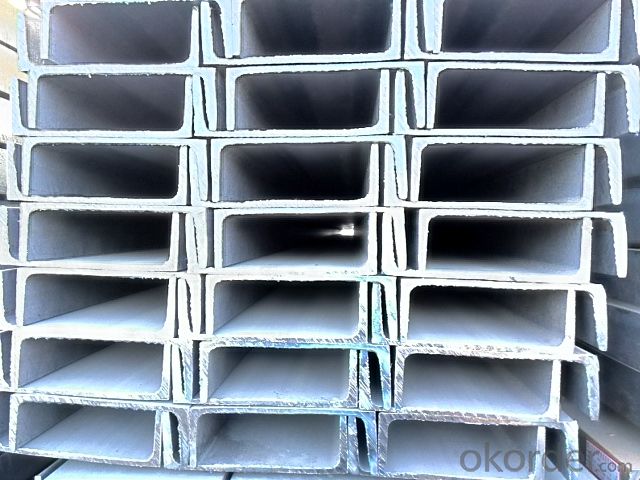
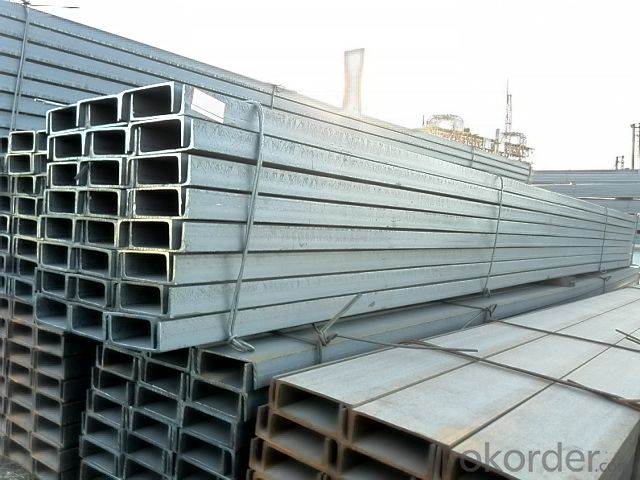
- Q: Are there any safety precautions to be followed while working with steel rebars?
- Yes, there are several safety precautions that should be followed while working with steel rebars. Firstly, it is important to wear appropriate personal protective equipment (PPE) such as safety glasses, gloves, and steel-toed boots to protect against potential hazards. Secondly, workers should be trained on proper lifting techniques and use mechanical aids if necessary to prevent musculoskeletal injuries. Additionally, it is crucial to ensure a clean and organized work area to minimize the risk of tripping or falling. Finally, workers should be cautious of sharp edges and use proper tools and equipment when handling steel rebars to avoid cuts or punctures.
- Q: Do l 8, three grade steel have discs?
- Yes, but because of the higher grade of the three screw thread, they are straight bars. It's not necessary to use grade three for 8 mm.
- Q: What is the effect of exposure to extreme temperatures on steel rebars?
- Exposure to extreme temperatures can have a significant effect on steel rebars. When exposed to high temperatures, steel rebars can undergo thermal expansion and lose their strength, leading to potential structural failures. On the other hand, exposure to extremely low temperatures can cause steel rebars to contract, potentially leading to cracking and brittle behavior. Therefore, it is crucial to consider temperature effects when designing structures that incorporate steel rebars and implement appropriate measures to mitigate these effects.
- Q: How do steel rebars affect the overall structural integrity of a building?
- Steel rebars play a crucial role in enhancing the overall structural integrity of a building. By reinforcing and strengthening concrete structures, rebars effectively distribute loads and resist tension, preventing cracks and structural failures. This reinforcement enables buildings to withstand various forces, such as earthquakes and high winds, ensuring their stability and durability over time.
- Q: What is the average tensile strength of steel rebars?
- The average tensile strength of steel rebars typically ranges from 400 to 600 megapascals (MPa).
- Q: What are the guidelines for proper splicing of steel rebars in concrete structures?
- The guidelines for proper splicing of steel rebars in concrete structures are essential to ensure the structural integrity and safety of the building. Here are some key guidelines to follow: 1. Length of Lap Splicing: The length of lap splicing refers to the overlapping distance between two rebars. It is crucial to follow the specified length mentioned in the design plans or structural codes. Typically, the minimum lap length for rebars is specified as a certain multiple of their diameter, such as 40 times the diameter for tension members and 25 times the diameter for compression members. 2. Cleanliness: Before splicing the rebars, the surfaces of the bars must be cleaned thoroughly to remove any rust, scale, dirt, or other contaminants. Proper cleaning ensures a strong bond between the bars during the splicing process. 3. Proper Alignment: The rebars being spliced should be properly aligned to maintain the continuity of the reinforcement. Misalignment can lead to stress concentration, weakening the overall structure. The bars should be aligned in a straight line, ensuring that they are parallel and evenly spaced. 4. Splice Type: There are various types of splice connections available, such as lap splicing, mechanical splicing, and welded splicing. The choice of splice type should be based on the specific project requirements, structural design, and local building codes. 5. Reinforcement Bar Preparation: The rebars need to be prepared before splicing by removing any scale, rust, or other contaminants. This can be done through brushing, grinding, or shot blasting. Additionally, the ends of the rebars should be clean and free of any deformations or irregularities. 6. Testing and Inspection: It is crucial to conduct regular testing and inspection to ensure the quality and integrity of the spliced rebars. Non-destructive testing methods, such as ultrasound or magnetic particle testing, can be employed to check the bond strength and ensure the splicing has been done correctly. 7. Adequate Cover: The spliced rebars must have adequate concrete cover to protect them from corrosion and fire. The thickness of concrete cover should comply with the local building codes and design specifications. 8. Proper Grouting: If mechanical splices are used, it is important to ensure proper grouting or filling of the splice sleeve or coupler with an approved non-shrink grout. This helps in achieving full load transfer and prevents any movement or slippage of the rebars. 9. Documentation: All splicing activities should be properly documented, including the type of splice used, lap lengths, inspection reports, and any deviations from the original design. This documentation is important for future reference, maintenance, and to ensure compliance with regulatory agencies. It is important to note that these guidelines are general recommendations, and specific project requirements and local building codes should always be followed for proper splicing of steel rebars in concrete structures. Consulting with a qualified structural engineer or following the advice of a reputable construction professional is crucial to ensure the highest standards of safety and compliance.
- Q: Are steel rebars suitable for use in wastewater treatment plants?
- Yes, steel rebars are suitable for use in wastewater treatment plants. Wastewater treatment plants often require reinforced concrete structures to withstand the harsh and corrosive environment of the facility. Steel rebars, which are commonly used to reinforce concrete, provide the necessary strength and durability for these structures. They are resistant to corrosion, which is essential in a wastewater treatment plant where the presence of chemicals and corrosive elements is high. Additionally, steel rebars offer excellent tensile strength, ensuring that the concrete structures can withstand heavy loads and pressures. Overall, steel rebars are a reliable and appropriate choice for use in wastewater treatment plants to ensure the longevity and structural integrity of the facility.
- Q: Can steel rebars be used in architectural detailing?
- Yes, steel rebars can be used in architectural detailing. Steel rebars are often used to reinforce concrete structures and provide additional strength and stability. In architectural detailing, rebars can be incorporated into the design to enhance the structural integrity of the building or to create unique and intricate patterns. Rebars can be bent, shaped, and placed in various configurations to achieve the desired architectural effect. Additionally, steel rebars are durable, resistant to corrosion, and readily available, making them a popular choice in architectural detailing.
- Q: What is the maximum length of a steel rebar available in the market?
- Manufacturers and the construction industry dictate the maximum length of steel rebar found in the market, which can differ. Typically, steel rebar is available in lengths ranging from 20 feet (6 meters) to 60 feet (18 meters), favored due to transportation and handling limitations. Nevertheless, it is crucial to acknowledge that manufacturers can accommodate custom lengths for project-specific needs upon special request.
- Q: Can steel rebars be used in the construction of shopping centers?
- Indeed, steel rebars possess the capability to be utilized in the construction of shopping centers. These rebars, known as reinforcing bars, are extensively employed in the construction sector to fortify concrete structures. Shopping centers typically necessitate robust, resilient, and enduring infrastructure, and steel rebars furnish the indispensable strength and reinforcement essential for supporting the building's weight and load. They effectively thwart cracks, augment structural stability, and heighten the overall durability of the construction. Furthermore, steel rebars can be effortlessly molded and trimmed to conform to the specific design prerequisites of a shopping center, rendering them an adaptable and pragmatic choice for construction projects.
Send your message to us
U-channel Bars with High Quality and Good Price
- Loading Port:
- Tianjin
- Payment Terms:
- TT OR LC
- Min Order Qty:
- 25 m.t.
- Supply Capability:
- 10000 m.t./month
OKorder Service Pledge
OKorder Financial Service
Similar products
Hot products
Hot Searches
Related keywords
